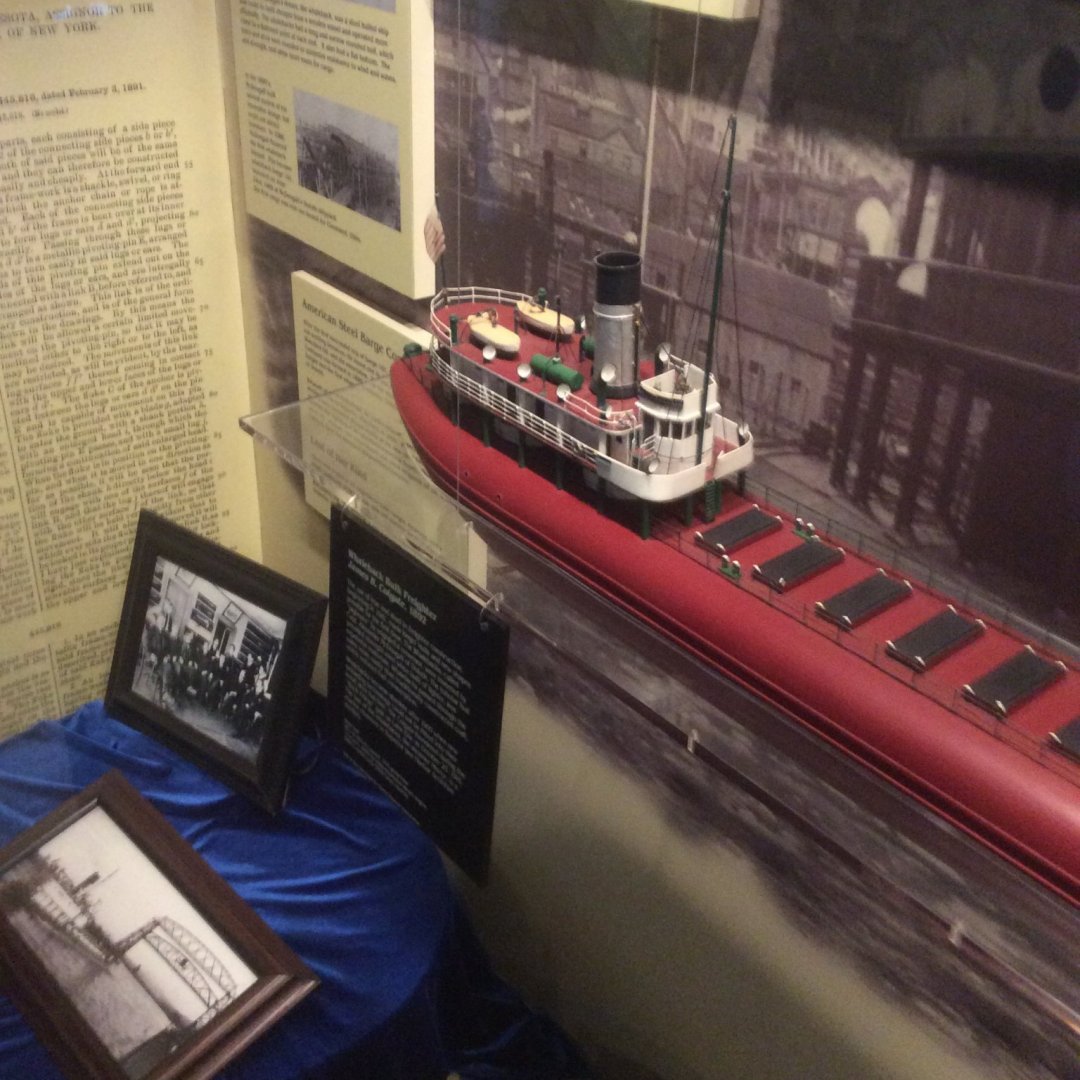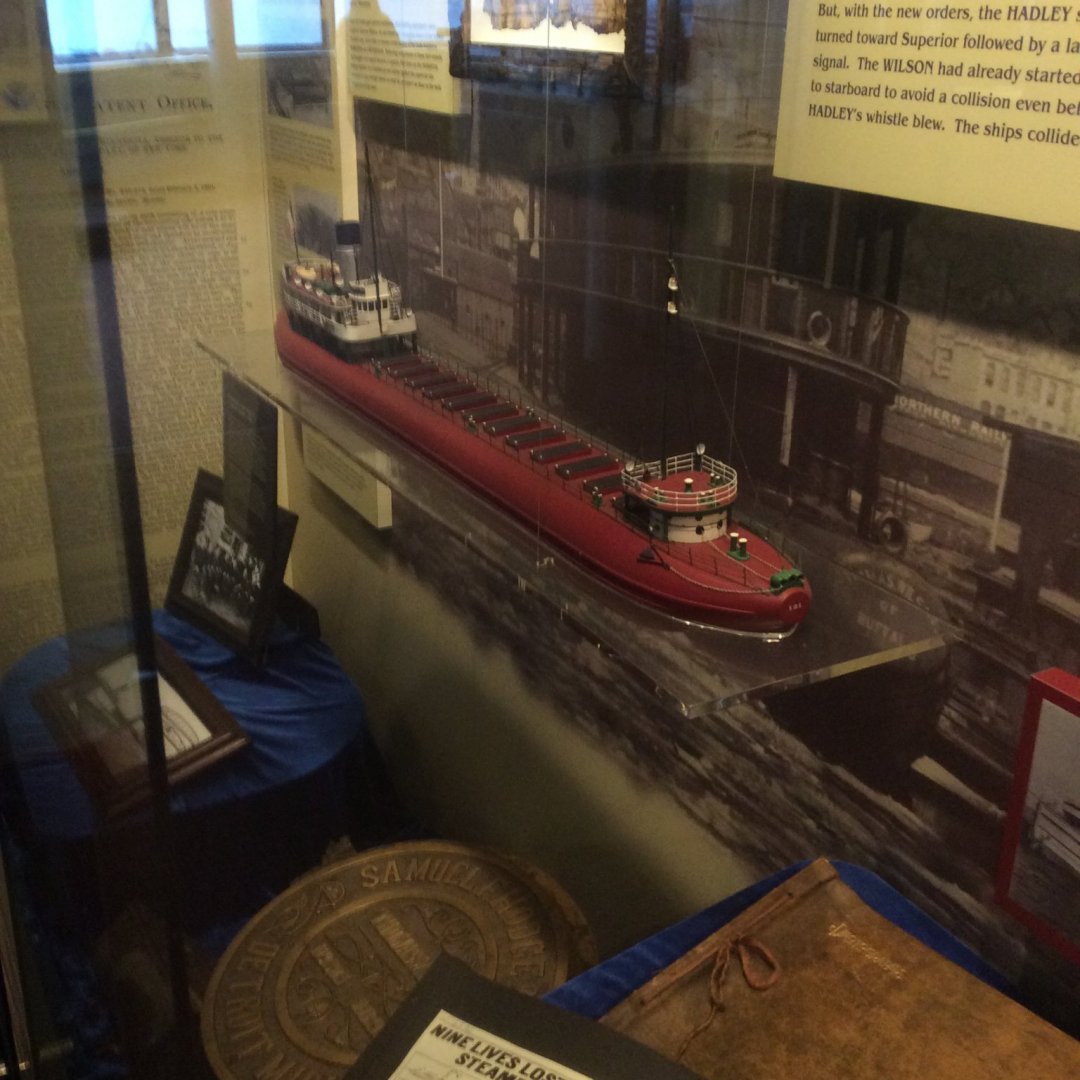
Roger Pellett
-
Posts
4,519 -
Joined
-
Last visited
Content Type
Profiles
Forums
Gallery
Events
Posts posted by Roger Pellett
-
-
What was the purpose of the “blinder” plates on either side of the front of the locomotive?
Roger
- Canute, mtaylor and popeye the sailor
-
 3
3
-
-
- hexnut, Canute and GrandpaPhil
-
 3
3
-
Dan,
We both enjoyed meeting and having dinner with you too at the recent NRG Conference.
The Colegate Model is part of an exhibit at the Lake Superior Maritime Visitors Center here in Duluth. The Visitors Center is run by the Army Corps of Engineers who are responsible for maintaining harbor improvements around the Great Lakes. I will try to stop by next week to take some photos but you might also wish to contact them directly.
Roger
-
Actually Keith, you did a nice repair job. If it were me, I would assume that it is fixed and continue to build the model. Eventually, you may come up with a way to camouflage the repair oe maybe decide to leave it alone. Trying to hide it with paint seldom ends well.
Roger
- KeithAug, FriedClams, Keith Black and 1 other
-
 4
4
-
Two years ago I was able to visit the National Maritime Museum’s small boat collection at Falmouth, Cornwall. The boatwrights there recently built a full sized replica of one of Titanic’s 30ft lifeboats. Without seeing one of these in the flesh it is difficult to understand their size. They are huge!
This makes one wonder how the stacked boats away from the davits were intended to be launched. Were these to be manhandled over to the davits? While there was no shortage of manpower, it is hard to imagine moving these about on canted and pitching decks in an emergency.
Anyhow, a beautiful model of an impressive ship.
Roger
- FriedClams, cog, Canute and 2 others
-
 5
5
-
Does anyone know what becomes of these models that the Texas A&M Nautical Archeology Department builds? Do they have their own museum or are these given to regional museums having some association with the vessel being modeled?
Eric, The size of the paddle wheel in relation to the paddle box may shed some light on your question. The paddle box is much larger than the wheel.
Roger
-
In the days before automated feedwater control, the throttle and feedwater control valve had to be used in conjunction with each other to maintain an acceptable water level in the boiler. Opening the throttle required a corresponding increase in feedwater to avoid uncovering tubes in the boiler. Likewise, closing the throttle required decreasing feedwater to prevent water from carrying over into the engine cylinders. To do this, the engineer had to monitor his sight glasses while adjusting the feedwater control valve. For this reason, I believe that the large handwheel on the right hand side operates the feedwater control valve.
Roger
- Old Collingwood, CDW, thibaultron and 3 others
-
 6
6
-
A shop vacuum works fine for vacuum forming. No need for a dedicated vacuum pump.
Roger
- thibaultron, CDW, Old Collingwood and 3 others
-
 6
6
-
-
The following is quoted from an article published in the (US) Naval Institute Proceedings In 1894. The title of the article is Ships Boats.
” In all cases they (gratings) are to be made from seasoned ash and kept bright— shellac, paint, and varnish being objectionable.”
Ash is a light yellowish wood so gratings made from Boxwood and not darkened would be correct. My personal experience with ash is that has poor rot resistance so I don’t know why the navy preferred using ash finished bright.
- thibaultron, mtaylor, Canute and 1 other
-
 4
4
-
-
This is a confusing subject. My research indicates that in the US Navy boats were designated by both type and service. For example, the “lifeboat” was a boat suspended from davits that be quickly launched to rescue a man overboard. The boat needed to be a good seaboat; often a whaleboat (a Navy design, not a true whaleboat).
The only authorative text about Royal Navy Practice that I know of is CDR May’s Warship’s Boats book. I don’t have access to my copy at the moment but if my memory is correct the RN did utilize a specially designed lifeboat.
Again, American Practice, the gig is the Captain’s boat and the barge is the boat used when a flag Officer is embarked. So, yes it would be quite possible for a ship to carry specially finished whalers designated as gig and barge to be used by the captain and flag officer (if embarked).
Most warships of any size did carry a launch to do the heavy lifting; hauling ordnance, setting out anchors, and watering.
Period photos document the proliferation of boats, especially during peacetime as boats were handy tools to help the ship to get its job done.
Roger
- popeye2sea and mtaylor
-
 2
2
-
-
Our men’s book group just read and discussed the Caine Mutiny in memory of its author Herman Wouk who died earlier this year at age 103.
It is an excellent piece of naval fiction as well as a fine portrait of life on a small combatant, in this case a minesweeper built from a converted four stack destroyer.
If you have seen the movie, the book adds a lot that was cut and Queeg is not the same character as the one that Humphrey Bogart played. Wouk served on one of these ships and writes from experience.
- pythagoras, mtaylor, leclaire and 3 others
-
 6
6
-
At an NRG conference several years ago there was a presentation from the US Navy’s David Taylor Hydrodynamics Lab about building a model of one of the steam powered cruisers built by the US Navy during the Civil War. This vessel had a copper sheathed bottom.
The model’s builders used 3M transfer tape to stick the plates to the hull. This transfer tape comes on a waxed paper backing. When the backing is peeled off only the adhesive remains. There are many different strengths of adhesive available.
I tried this technique on the hull of a Great Lakes freighter model except that I used brass instead of copper. The adhesive from the tape was not strong enough to prevent the brass from curling up and I set the model aside. The idea is interesting enough for me to try again with softer copper.
Roger
-
-
-
-
An RIB? Things change. During my 1964 summer tour on Loyalty she was still equipped with a trusty 26ft motor whaleboat, probably the plastic, non magnetic variety. My best memories were being in the motor whaleboat, probably because I was out from under the captain’s thumb. I spent one day aboard a Japanese minesweeper. At the end of the day, the Japanese squadron commander sent Loyalty a signal “send your boat to pick up your officer.” I felt like a big shot!
While sweeping (practice) mines we went back and forth like mowing a lawn. Since there were four vessels in the squadron ships would be moving in opposite directions in adjacent lanes. It was essential for the OOD and in my case the JOOD to understand the actual width of the sweep gear as it was possible to hook the gear of the ship coming in the opposite direction. On one occasion, the captain came boiling out of his sea cabin behind the bridge concerned that we going to do just that!
Brian, a nice “first scratch build” of an interesting subject.
Roger
-
-
Many many years ago, a work colleague told me that he was going to remove a pear tree from his property and he would give me the logs. I found a local saw mill that was willing to cut them up and wound up with a stack of boards. When I moved from Southeastern, Ohio to Duluth, MN the movers moved them. They then sat in a “cool dry place” for many years until I finally cut them into blocks.
Jaager is right, I was amazed at the amount of waste just to get clear blocks from rough cut boards. One of the problems of using a professional saw mill is that you have little or no control how the logs are sawn. Knowing what I know now about the structure of wood I probably could have had the logs milled to reduce waste.
You are fortunate to have access to this wonderful modeling wood.
Roger
- mtaylor, Jolley Roger and Canute
-
 3
3
-
-
Interesting video! Unlike modern “high tech” rowing, this appears to be all arms and backs with short strokes and no feathering. Maybe there is a rower on the forum that can enlighten us on ancient rowing mechanics. Also, does anyone know what the slots in the looms of the oars are for?
Roger




Pequot 1908 by svein erik - FINISHED - 1/48 scale - Coast Guard Cutter
in - Build logs for subjects built 1901 - Present Day
Posted
Stein,
Nice work!
What are you using to attach the copper to the hull ?
Roger